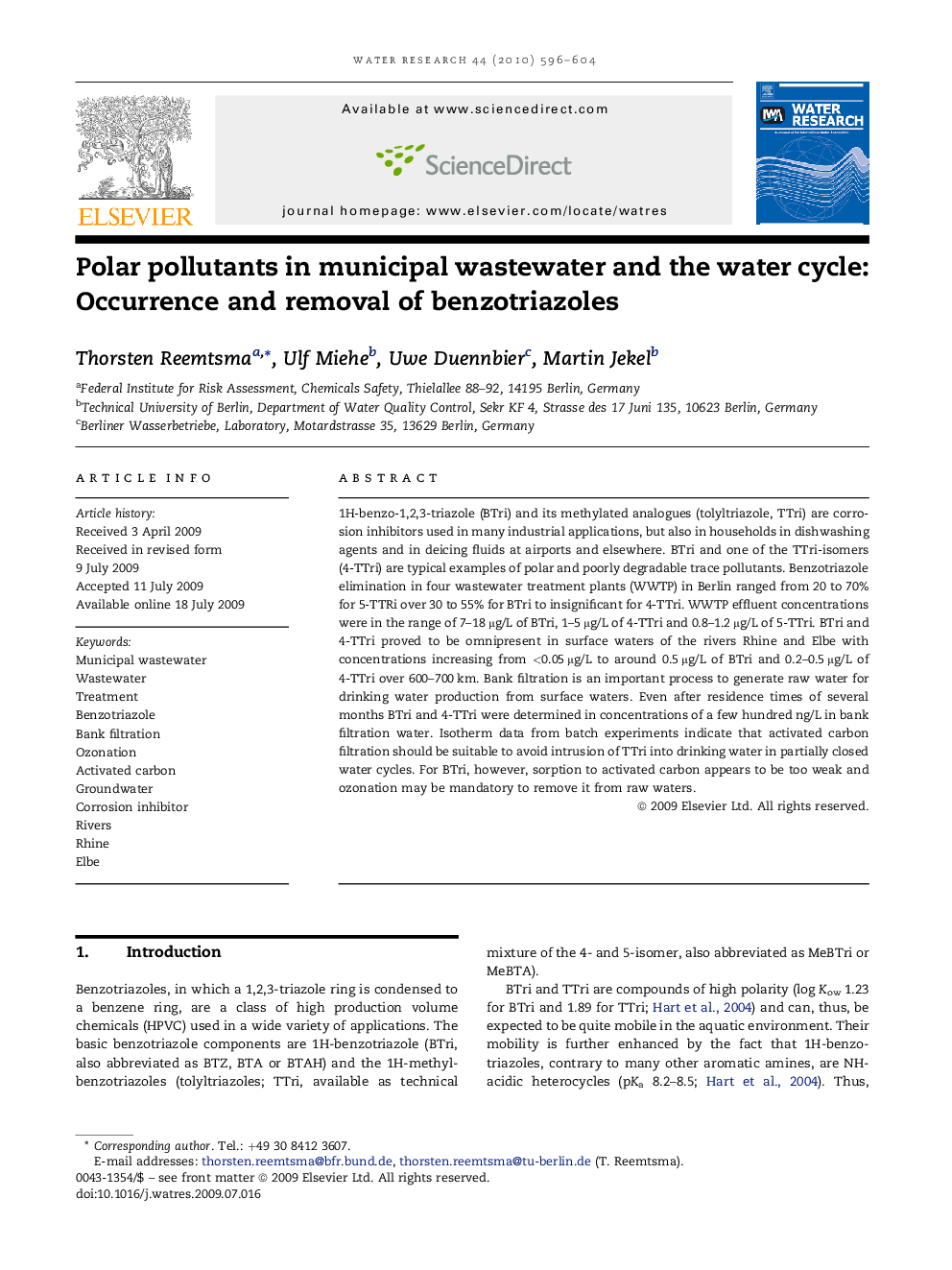| کد مقاله | کد نشریه | سال انتشار | مقاله انگلیسی | نسخه تمام متن |
|---|---|---|---|---|
| 4482828 | 1316870 | 2010 | 9 صفحه PDF | دانلود رایگان |

1H-benzo-1,2,3-triazole (BTri) and its methylated analogues (tolyltriazole, TTri) are corrosion inhibitors used in many industrial applications, but also in households in dishwashing agents and in deicing fluids at airports and elsewhere. BTri and one of the TTri-isomers (4-TTri) are typical examples of polar and poorly degradable trace pollutants. Benzotriazole elimination in four wastewater treatment plants (WWTP) in Berlin ranged from 20 to 70% for 5-TTRi over 30 to 55% for BTri to insignificant for 4-TTri. WWTP effluent concentrations were in the range of 7–18 μg/L of BTri, 1–5 μg/L of 4-TTri and 0.8–1.2 μg/L of 5-TTri. BTri and 4-TTri proved to be omnipresent in surface waters of the rivers Rhine and Elbe with concentrations increasing from <0.05 μg/L to around 0.5 μg/L of BTri and 0.2–0.5 μg/L of 4-TTri over 600–700 km. Bank filtration is an important process to generate raw water for drinking water production from surface waters. Even after residence times of several months BTri and 4-TTri were determined in concentrations of a few hundred ng/L in bank filtration water. Isotherm data from batch experiments indicate that activated carbon filtration should be suitable to avoid intrusion of TTri into drinking water in partially closed water cycles. For BTri, however, sorption to activated carbon appears to be too weak and ozonation may be mandatory to remove it from raw waters.
Journal: Water Research - Volume 44, Issue 2, January 2010, Pages 596–604